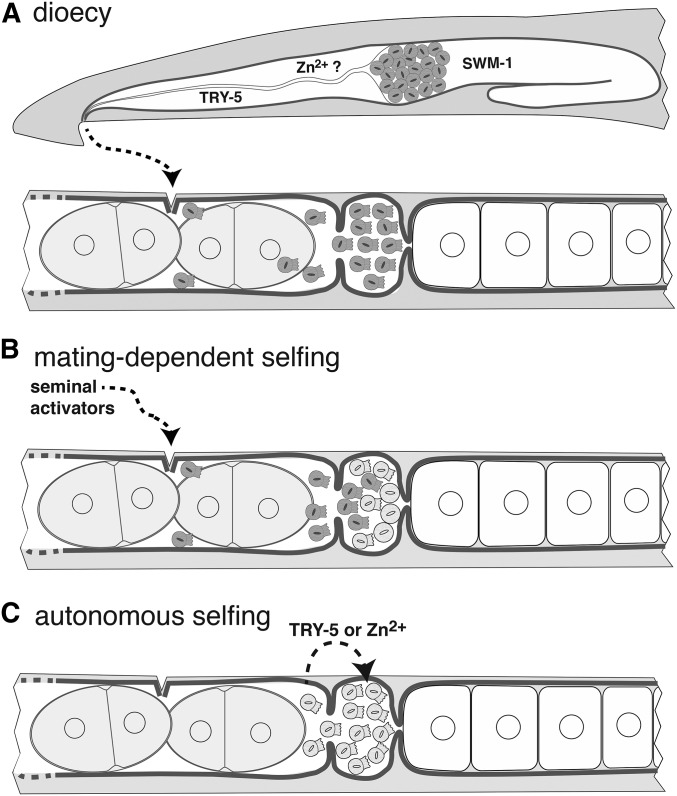Figure 4.
Scenario for the evolution of self-fertility in Caenorhabditis. (A) In the gonochoristic/dioecious Caenorhabditis ancestor, males (top) store gametes as inactive spermatids in the seminal vesicle, maintained in this state by the protease inhibitor SWM-1. Upon mating and ejaculation, male spermatids (gray) pass through the glandular vas deferens, where they encounter active TRY-5 protease and the signal for the spe-8 pathway, which may be zinc ions. Once inside the female (bottom), they are activated and migrate from the uterus to the spermatheca, where they await ovulation and a chance to fertilize an egg. (B) A hypothetical first step to self-fertility is a change in germline sex determination that allows the production of some self-spermatids (light circles). These cannot activate on their own, but, after mating and transfer of some male seminal fluid, they are activated in trans (light spermatozoa). (C) In the second step, hermaphrodites evolve the ability to activate self-spermatids autonomously, by increasing the level of active TRY-5 protease (as in C. tropicalis) or the signal for the spe-8 pathway (in C. elegans and C. briggsae).

